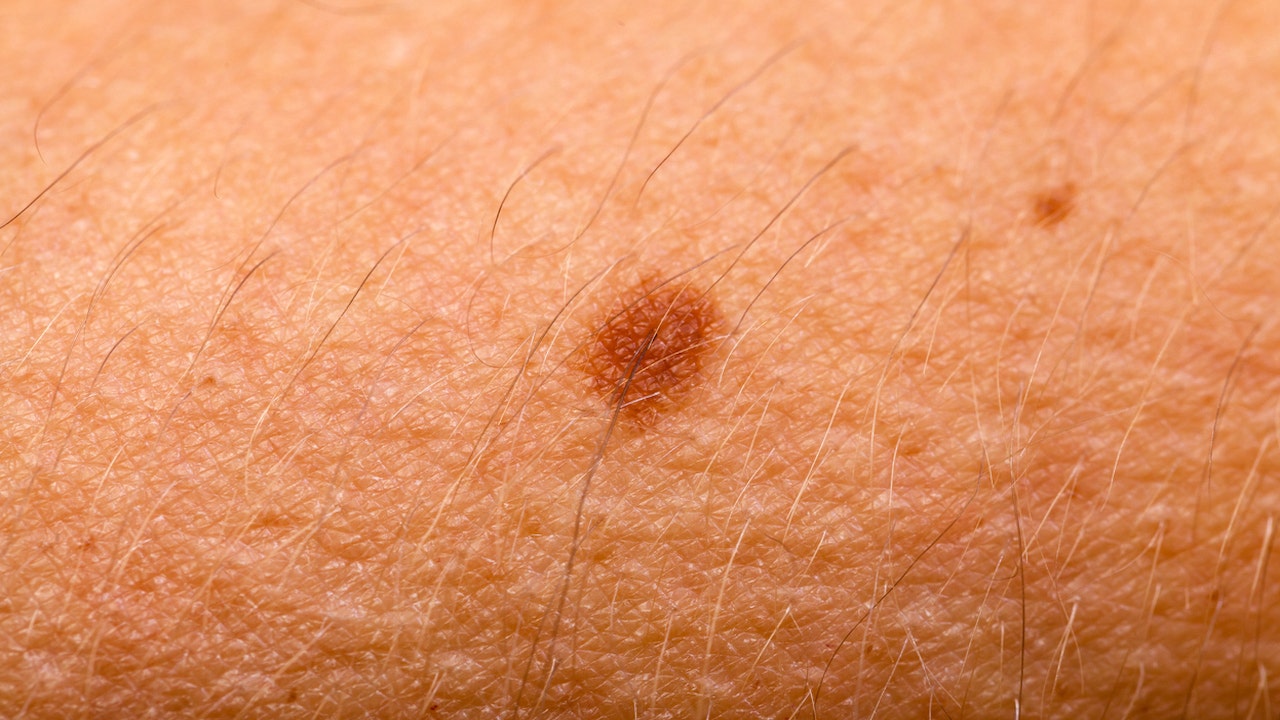Health
New hair loss treatments may be on the way after major discovery, researchers say

A major discovery in hair growth research could pave the way for future medications, a San Diego biopharmaceutical company has announced.
Researchers from the University of California have identified a molecule called osteopontin that is linked to faster hair growth, according to a press release from Amplifica Holdings Group.
The findings were published in the journal Nature last month.
SECRETS OF GRAY HAIR REVEALED: SCIENTISTS MAY HAVE FIGURED OUT WHY OUR HAIR DOES THIS
The molecule, which is found in higher levels in hairy moles, was shown to stimulate hair follicle stem cells when injected into the skin.
When the researchers administered a dose of osteopontin to human hair follicles in skin grafts, it generated new growth.
A major discovery in hair growth research could pave the way for future medications, a San Diego biopharmaceutical company has announced. (iStock)
Maksim Plikus, PhD, Amplifica’s chief scientific officer, noted that for this study, the researchers drew inspiration from “Mother Nature’s own experiment.”
“Millions of people have small and large moles that grow long hair,” he explained to Fox News Digital. “Thus, molecules that are increased in such human skin moles might hold an answer for hair stem cell stimulation.”
CURE FOR BALDNESS COULD BE ON HORIZON AS JAPANESE RESEARCHERS GENERATE MATURE HAIR FOLLICLES IN LAB
“Right now, for people with hair loss, there are treatments available, but no solution,” Plikus said. “This research points to a potential real solution for hair loss that physicians and patients have been searching for.”

Researchers from the University of California have identified a molecule called osteopontin that is linked to faster hair growth, according to a press release from Amplifica Holdings Group. (iStock)
This finding of a naturally occurring process for hair growth could lead to the treatment of hair loss, with clinical trials on the horizon, the release stated.
The reasons behind hair loss are complex, noted Plikus, who is also a professor of developmental and cell biology at the University of California, Irvine.
HOW MANY TIMES A WEEK SHOULD YOU WASH YOUR HAIR? IT DEPENDS, EXPERTS SAY
“Hair loss is underlined by a decrease in essential signaling proteins inside of hair follicles that normally stimulate hair stem cells,” he explained. “For common forms of hair loss, hair stem cells remain dormant for very long stretches of time, despite being intact.”
One efficient strategy for combating hair loss would be to inject signaling proteins into the scalp to activate dormant hair stem cells, a common approach used in medical aesthetics, Plikus said.

The molecule, which is found in higher levels in hairy moles, was shown to stimulate hair follicle stem cells when injected into the skin. (iStock)
“Previous hair studies have recognized that such an approach can prove to be very efficient, but which signaling proteins constitute a good candidate for hair stem cell stimulation in humans remained largely unknown.”
CLICK HERE TO SIGN UP FOR OUR HEALTH NEWSLETTER
The discovery of osteopontin as a hair growth stimulant is the result of a decade of research, noted Plikus.
While the Amplifica team is excited about the potential for finding a treatment that will work for both men and women, Plikus emphasized that additional clinical studies are required to further evaluate these findings in humans.
Amplifica’s initial study, which will focus on the “safety and tolerability” of osteopontin, is slated to begin this summer.

Health
Semaglutide Pills and Injections Vs. Drops: Experts Weigh In | Woman's World

Sign Up
Create a free account to access exclusive content, play games, solve puzzles, test your pop-culture knowledge and receive special offers.
Already have an account? Login
Use left and right arrow keys to navigate between menu items.
Use escape to exit the menu.
Health
Jennifer Hudson Lost 80-Lbs Without Depriving Herself—Learn Her Secrets

Sign Up
Create a free account to access exclusive content, play games, solve puzzles, test your pop-culture knowledge and receive special offers.
Already have an account? Login
Use left and right arrow keys to navigate between menu items.
Use escape to exit the menu.
Health
Kennedy’s Plan for the Drug Crisis: A Network of ‘Healing Farms’

Though Mr. Kennedy’s embrace of recovery farms may be novel, the concept stretches back almost a century. In 1935, the government opened the United States Narcotic Farm in Lexington, Ky., to research and treat addiction. Over the years, residents included Chet Baker and William S. Burroughs (who portrayed the institution in his novel, “Junkie: Confessions of an Unredeemed Drug Addict”). The program had high relapse rates and was tainted by drug experiments on human subjects. By 1975, as local treatment centers began to proliferate around the country, the program closed.
In America, therapeutic communities for addiction treatment became popular in the 1960s and ’70s. Some, like Synanon, became notorious for cultlike, abusive environments. There are now perhaps 3,000 worldwide, researchers estimate, including one that Mr. Kennedy has also praised — San Patrignano, an Italian program whose centerpiece is a highly regarded bakery, staffed by residents.
“If we do go down the road of large government-funded therapeutic communities, I’d want to see some oversight to ensure they live up to modern standards,” said Dr. Sabet, who is now president of the Foundation for Drug Policy Solutions. “We should get rid of the false dichotomy, too, between these approaches and medications, since we know they can work together for some people.”
Should Mr. Kennedy be confirmed, his authority to establish healing farms would be uncertain. Building federal treatment farms in “depressed rural areas,” as he said in his documentary, presumably on public land, would hit political and legal roadblocks. Fully legalizing and taxing cannabis to pay for the farms would require congressional action.
In the concluding moments of the documentary, Mr. Kennedy invoked Carl Jung, the Swiss psychiatrist whose views on spirituality influenced Alcoholics Anonymous. Dr. Jung, he said, felt that “people who believed in God got better faster and that their recovery was more durable and enduring than people who didn’t.”
-
/cdn.vox-cdn.com/uploads/chorus_asset/file/25822586/STK169_ZUCKERBERG_MAGA_STKS491_CVIRGINIA_A.jpg)
/cdn.vox-cdn.com/uploads/chorus_asset/file/25822586/STK169_ZUCKERBERG_MAGA_STKS491_CVIRGINIA_A.jpg) Technology1 week ago
Technology1 week agoMeta is highlighting a splintering global approach to online speech
-

 Science1 week ago
Science1 week agoMetro will offer free rides in L.A. through Sunday due to fires
-
/cdn.vox-cdn.com/uploads/chorus_asset/file/23935558/acastro_STK103__01.jpg)
/cdn.vox-cdn.com/uploads/chorus_asset/file/23935558/acastro_STK103__01.jpg) Technology7 days ago
Technology7 days agoAmazon Prime will shut down its clothing try-on program
-

 News1 week ago
News1 week agoMapping the Damage From the Palisades Fire
-
/cdn.vox-cdn.com/uploads/chorus_asset/file/25826211/lorealcellbioprint.jpg)
/cdn.vox-cdn.com/uploads/chorus_asset/file/25826211/lorealcellbioprint.jpg) Technology7 days ago
Technology7 days agoL’Oréal’s new skincare gadget told me I should try retinol
-
/cdn.vox-cdn.com/uploads/chorus_asset/file/25832751/2192581677.jpg)
/cdn.vox-cdn.com/uploads/chorus_asset/file/25832751/2192581677.jpg) Technology3 days ago
Technology3 days agoSuper Bowl LIX will stream for free on Tubi
-

 Business5 days ago
Business5 days agoWhy TikTok Users Are Downloading ‘Red Note,’ the Chinese App
-
/cdn.vox-cdn.com/uploads/chorus_asset/file/25835602/Switch_DonkeyKongCountryReturnsHD_scrn_19.png)
/cdn.vox-cdn.com/uploads/chorus_asset/file/25835602/Switch_DonkeyKongCountryReturnsHD_scrn_19.png) Technology1 day ago
Technology1 day agoNintendo omits original Donkey Kong Country Returns team from the remaster’s credits



/cdn.vox-cdn.com/uploads/chorus_asset/file/25829977/STK051_TIKTOKBAN_B_CVirginia_C.jpg)










